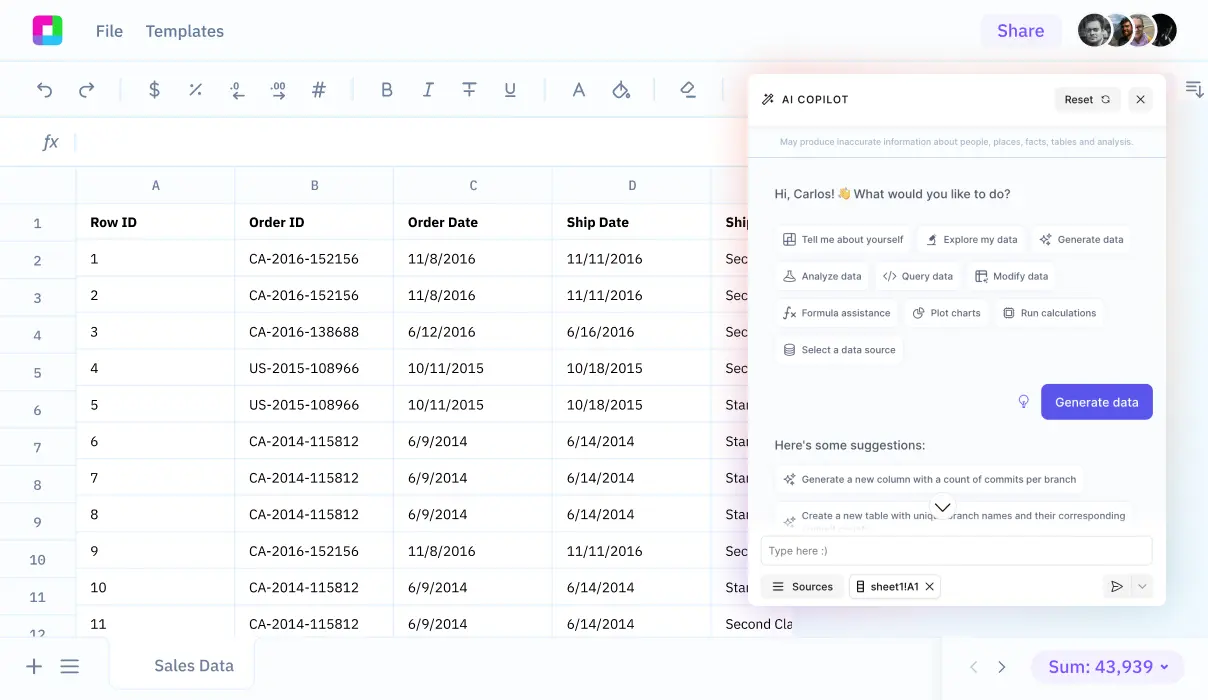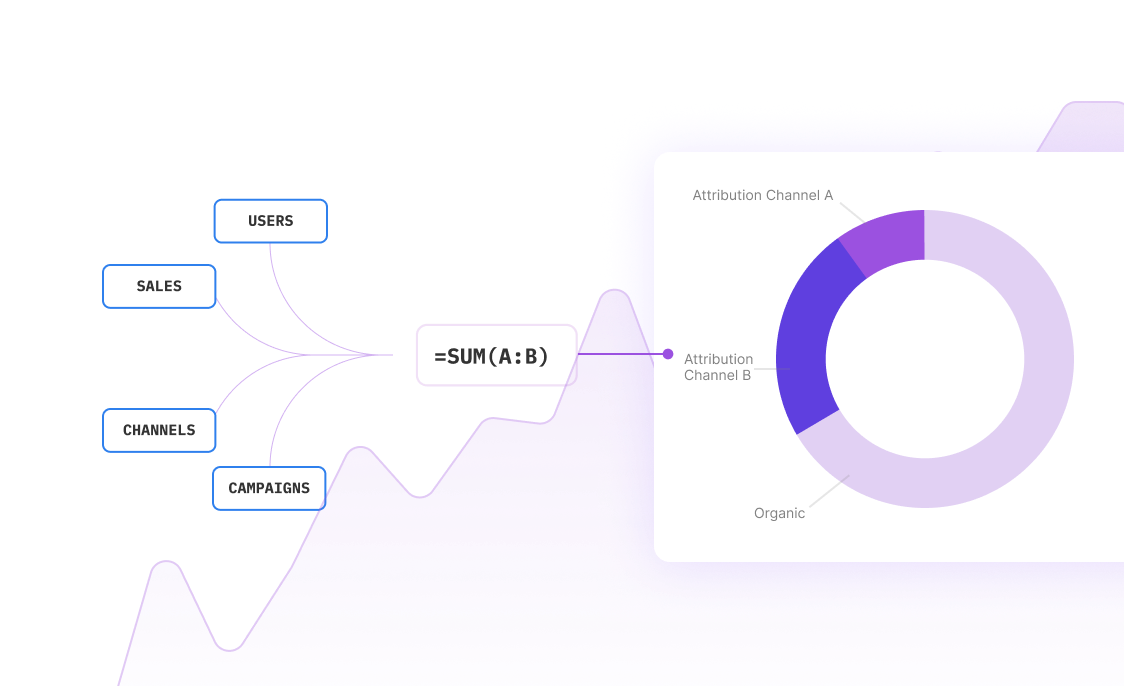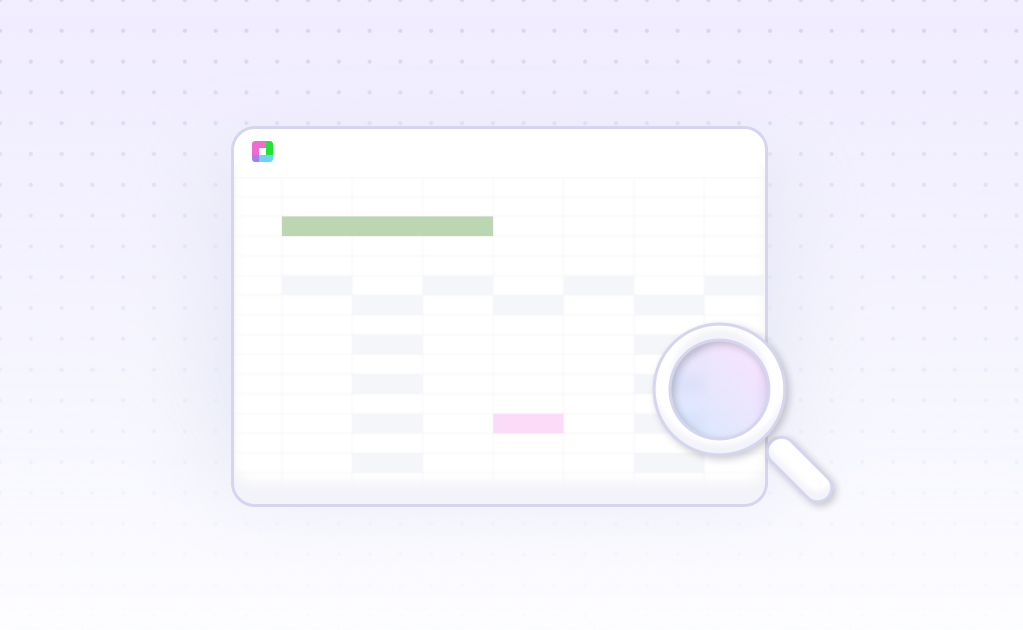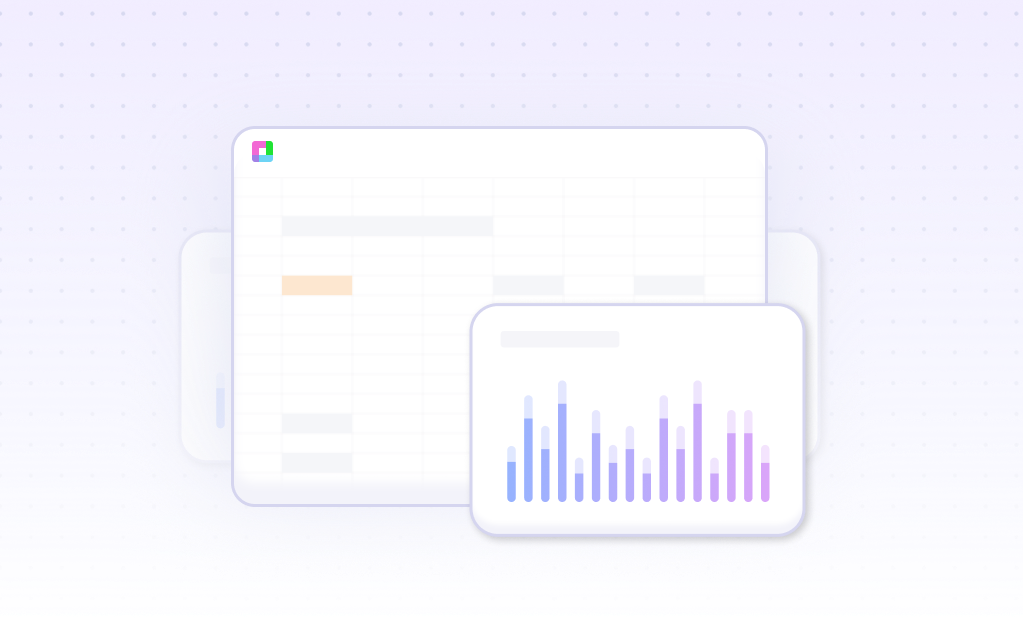
Introduction
Debt to credit analysis helps evaluate a company's financial health through detailed examination of financial statements and ratios. Traditional Excel templates offer comprehensive tools for this analysis, including balance sheets, income statements, and key financial ratios like liquidity, activity, and leverage metrics.
While Excel remains powerful, modern AI alternatives like Sourcetable streamline the analysis process. Sourcetable combines AI capabilities with spreadsheet functionality to automate data collection, process both structured and unstructured financial information, and provide real-time monitoring of financial metrics.
Discover how Sourcetable's AI-powered features transform debt to credit analysis with automated formula generation, intelligent data cleaning, and natural language processing at sourcetable.com/signup.
Why Sourcetable Is Superior for Debt-to-Credit Analysis
Sourcetable combines spreadsheet analytics with AI-powered automation to streamline debt-to-credit analysis. Like Excel, it provides essential charting capabilities and multi-user collaboration. However, Sourcetable's automation features accelerate loan processing and standardize compliance measures.
Operational Efficiency
Sourcetable's automation capabilities reduce inefficient tasks and speed up loan processing. The platform standardizes decision-making and automatically generates credit memos, eliminating manual documentation work that plagues traditional Excel workflows.
Enhanced Analysis
While both platforms offer calculators and charting tools, Sourcetable enables more complex loan evaluations through what-if scenarios. This advanced functionality, combined with audit trail features, delivers more consistent loan decisions and higher yields on commercial loans.
Documentation and Compliance
Sourcetable streamlines documentation generation and standardizes compliance processes. Its built-in audit trail ensures transparency and accountability, surpassing Excel's basic tracking capabilities.
Benefits of Debt to Credit Analysis with Sourcetable
Why Debt to Credit Analysis Matters
Debt covenants serve as crucial safeguards in credit risk analysis. These contractual terms protect lenders by ensuring borrowers maintain specific financial metrics and manageable debt levels. By limiting borrower debt through covenants, lenders significantly improve their credit risk position.
Advantages of Using Sourcetable for Credit Analysis
Sourcetable's AI-native platform revolutionizes credit analysis with real-time data syncing across 100+ business applications. Unlike Excel's cumbersome handling of large datasets, Sourcetable processes multi-gigabit CSV files and performs billion-row queries in sub-second time.
The platform's cloud computing capabilities transform compute-intensive credit analysis tasks from time-consuming Excel operations into near-instant results. Sourcetable maintains familiar A1 notation and cell-based referencing while enabling advanced 3D and 4D data transformations.
AI-Enhanced Financial Analysis
Sourcetable's AI integration delivers smarter, faster, and more accurate financial analysis. The platform automates workflows, improves forecasting accuracy, and enables real-time decision-making. Teams can scale their analysis efforts while extracting actionable insights from complex credit data, making AI-powered credit analysis a competitive necessity.
Debt and Credit Analysis with Sourcetable AI Spreadsheet
Sourcetable's AI-powered platform streamlines complex debt and credit analysis through advanced data processing and natural language interactions. The platform enables efficient calculation of key financial metrics while automating data analysis and reporting.
Credit Analysis Capabilities
Calculate critical ratios like the Debt Service Coverage Ratio (DSCR = EBITDA / Debt Service Obligations) instantly through natural language queries. Sourcetable evaluates creditworthiness by analyzing liquidity ratios, including the current ratio (Total Assets / Current Liabilities) and the more stringent quick ratio for assets convertible to cash.
AI-Powered Debt Analysis
Sourcetable's AI identifies potential defaulters through analytics-based assessment and automatically prioritizes debt collection based on risk and value. The platform provides real-time analysis of collection efficiency and adjusts strategies through prescriptive analytics.
Automated Reporting Features
Generate comprehensive debt analysis reports and visualizations automatically through AI-guided automation. Sourcetable processes large datasets efficiently, connecting directly to databases and delivering instant insights through natural language interaction.
AI-Powered Debt-to-Credit Analysis Use Cases
Debt-to-Income Analysis |
Calculate and track borrower DTI ratios using the formula |
Business Debt Service Coverage |
Monitor DSCR metrics using |
Liquidity Assessment |
Track Current Ratio using |
Credit Utilization Monitoring |
Calculate Credit Utilization Ratio using |
Frequently Asked Questions
What is debt to credit analysis and why is medical debt treated differently?
Debt to credit analysis examines how different types of debt affect creditworthiness. Medical debt receives special treatment because it has little predictive value for credit underwriting, and people with medical debt are actually less likely to default on credit than those with other types of debt. The three major credit rating agencies (Equifax, Experian, and TransUnion) removed medical debt from credit reports in 2023, and major creditors like Fannie Mae and Freddie Mac treat medical debt differently than other debt.
How can Sourcetable help with debt to credit analysis?
Sourcetable is an AI-native spreadsheet that syncs with various databases and business applications, enabling comprehensive debt to credit analysis. It offers 500+ formulas, SQL querying capabilities, and can handle billion-row datasets in sub-second time. The platform's AI copilot assists with database-centric analysis and workbook range selection, helping finance teams work faster and more accurately with their data.
What advantages does Sourcetable offer over traditional spreadsheets for financial analysis?
Sourcetable provides cloud compute capabilities for handling compute-intensive tasks that would take longer in Excel, supports advanced data types including 3D and 4D, and can perform vector queries and transformations. It integrates with over 100 business applications like Stripe and Quickbooks, and its AI copilot helps analysts work smarter and faster while maintaining higher accuracy, allowing teams to focus more on strategic planning and value creation.
Conclusion
Traditional credit analysis in Excel provides comprehensive financial assessment through detailed templates covering balance sheets, income statements, and key ratios. These templates calculate essential metrics like debt ratios, probability of default (PD), loss given default (LGD), and exposure at default (EAD).
Sourcetable revolutionizes this process by combining Excel's analytical capabilities with AI-powered automation. Its natural language interface and integration with over 100 data sources streamline credit analysis, eliminating the need for complex formulas or extensive Excel knowledge. Experience faster, more intuitive debt to credit analysis today at sourcetable.com/signup.
Recommended Analysis Guides
Connect your most-used data sources and tools to Sourcetable for seamless analysis.
Frequently Asked Questions
If you question is not covered here, you can contact our team.
Contact Us





